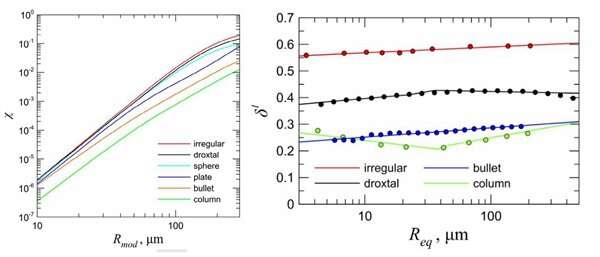Radar-lidar ratio: prospective method in cirrus clouds research

Recently, a team of researchers led by WANG Zhenzhu from the Anhui Institute of Optics and Fine Mechanics (AIOFM) of the Hefei Institutes of Physical Science (HFIPS), together with their international collaborator from the Institute of Atmospheric Optics (IAO), developed a prospective method called Radar-Lidar Ratio for retrieving cloud microphysics.
Cirrus clouds, which consists mainly of ice crystals, are important components of the atmosphere which essentially modulate the radiative budget of the Earth. The microphysical properties of the ice crystals as well as their number density are poorly known because of their great variability in time and space and difficulties of field measurements.
In this experiment, the researchers calculated and analyzed the ratio of the backscattered signals of lidar and radar, for the first time, for typical shapes of ice crystals and wide distribution of the crystals over their sizes.
The results showed that the lidar-radar ratio is most sensitive to crystal sizes while the lidar depolarization ratio is most sensitive to crystal shapes, which will be a base for creation of algorithms inferring both sizes and shapes of the ice crystals in this cloud.
Since the China-Russia Research Center for Atmospheric Optics was jointly established in 2019, this international team hasconducted many researches exploring properties of cirrus clouds for up-to-date models of climate.
This research marks an important improvement on theory of lidar and radar exploring of cirrus clouds.
Provided by Chinese Academy of Sciences





















